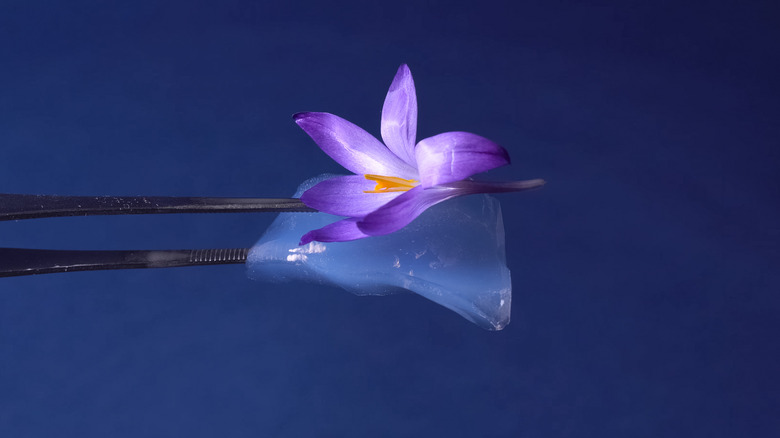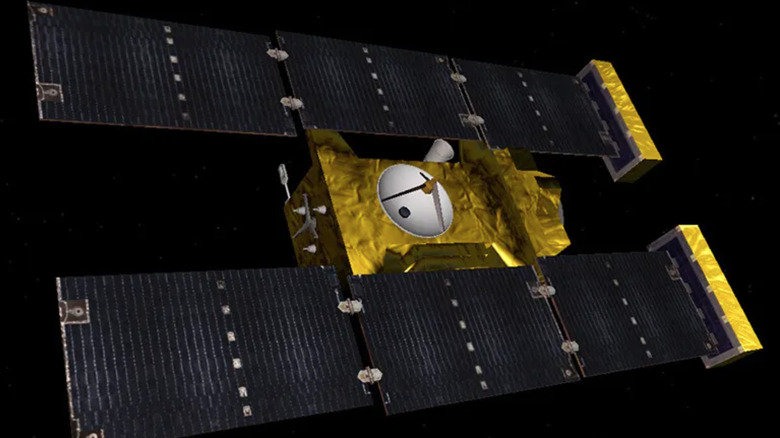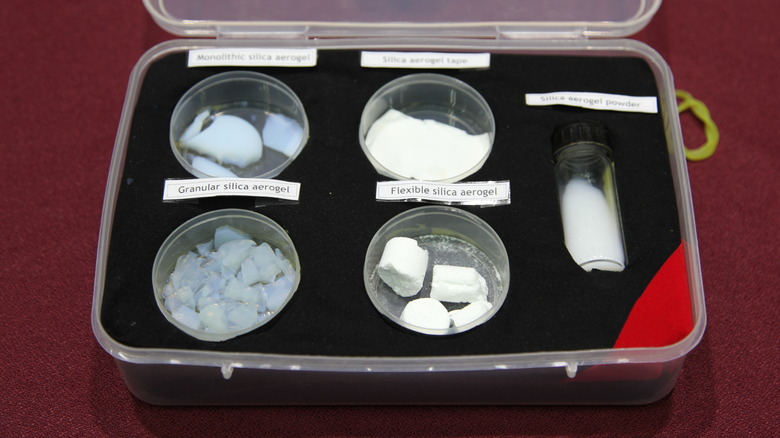Style Not Stardust: This Unique Handbag Gives NASA's Nanomaterial Its Biggest Use Yet
French luxury brand Coperni made several bold statements wth its space-themed collection during 2024 Paris Fashion Week, but one piece stood out with an offer to bring cosmic technology from the sky to the streets: the Air Swipe bag. In its Instagram, Coperni shared that the unique bag was made of the lightest solid on Earth, aerogel. Weighing only 33 g, lighter than an AirPods charging case, Coperni proudly noted that the game-changing bag was 99% air and just 1% glass.
Fashion isn't always functional, of course, and the infamous "micro bag" that can hold hardly anything is a common joke across the fashion industry. In a cheeky response to an Instagram comment asking if the Air Swipe actually worked as a bag, Coperni responded, "It can hold an iPhone ;)."
Coperni's Air Swipe was developed by Professor Ioannis Michaloudis, an internationally recognized artist and researcher who has been publishing studies on aerogel as a sculptural medium for over two decades. Aerogels have been used in clothing before – Oros Apparel notably used aerogel to block frigid temperatures in winter safety gear – but Coperni claims that its bag is the "biggest ever object made" using the remarkable material.
Here's what makes aerogel special and why this unusual substance could revolutionize more than just fashion.
Capturing stardust
Originally developed by American chemical engineer Samuel Kistler, who published his first paper on the material in 1931, early aerogels were limited to extremely lightweight applications: insecticides, flattening agents in paint, and components in silicone rubber manufacture. Scientists continued to experiment, however, and when NASA contractor Aspen Systems created the first aerogel composite blanket in 1993, it set off a series of developments that found new uses for the super-light material. In particular, aerogel went to space.
In 1999, the Stardust spacecraft left Earth with a mission to obtain extraterrestrial materials. Five years later, it was able to gather interstellar dust from the Wild-2 comet with the help of aerogel technology. Aerogel attached to Stardust's panels caught and preserved the materials from the comet. Afterward, the samples were sealed in the Stardust's Sample Return Capsule (SRC), which returned to Earth in 2006. Holding over 10,000 particles more than 1 micrometer in size, NASA revealed that the material gathered using Stardust's aerogel contained rare dust particles as old as the solar system itself.
How aerogel might be the future
Aerogel's ethereal appearance and incredibly light weight have given it the name "solid smoke," yet the material is surprisingly tough. NASA has described aerogel as "delicate as a flower, yet durable enough to withstand extreme environments." It is both flexible and durable, with some types capable of bearing up to 4,000 times their own weight. Aerogel is also highly resilient: In 2019, UCLA researchers developed an incredibly lightweight and durable ceramic aerogel that could compress down to just 5% of its original volume without damage.
Apart from being tough and lightweight, aerogel has several unusual properties. Its thermal and sound conductivity are both very low, and it's so porous that it can extract water from air with no external power. Aerogel's unique qualities have inspired proposals for everything from temperature regulation in buildings to artificial replacements for bone and cartilage in surgery. So, while aerogel is currently making its mark in the world of high fashion, we're likely to see more of it in the biotechnology, energy, and automotive industries in the years to come.


